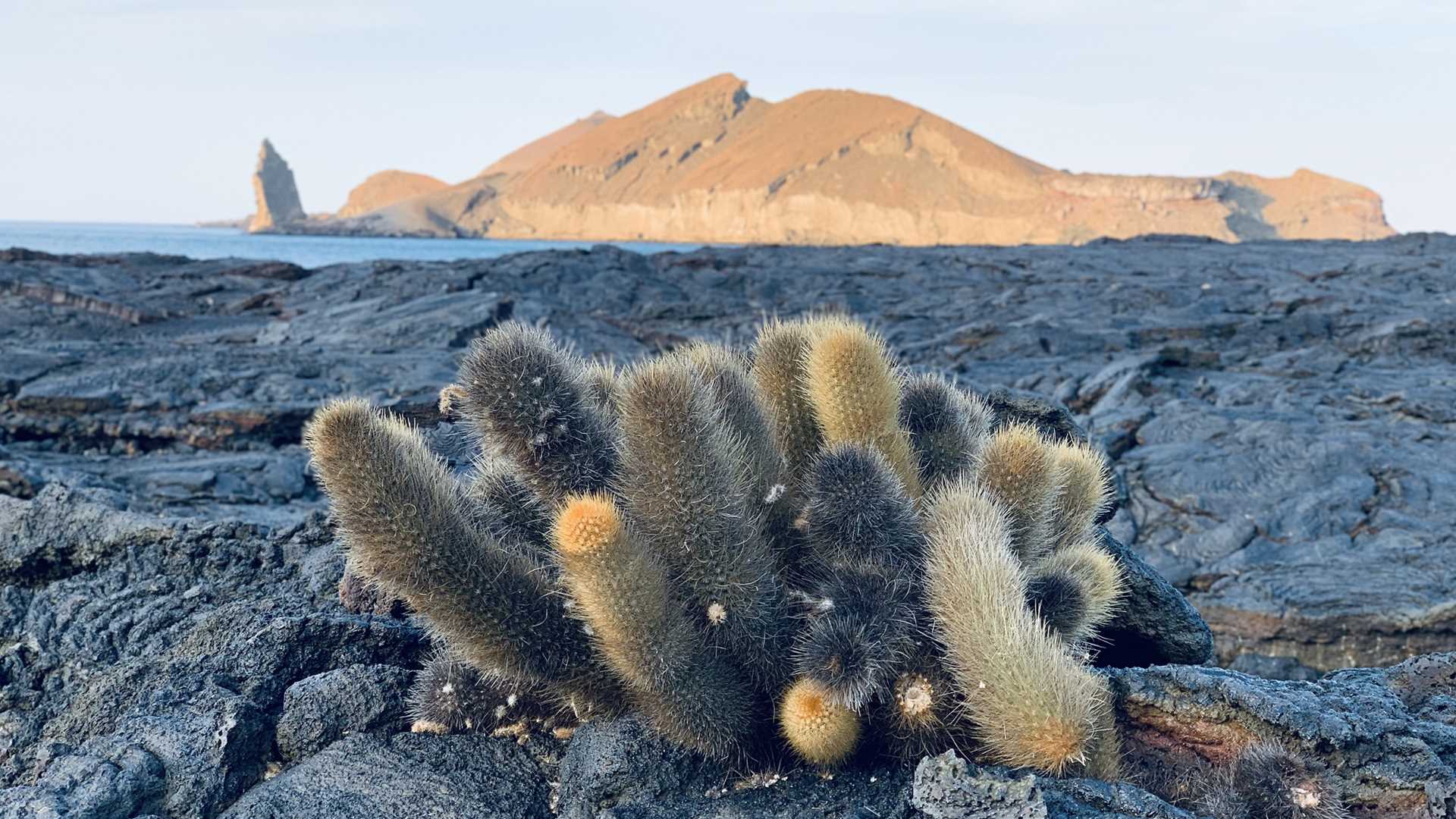Early in the morning National Geographic Islander drops anchors in the turquoise waters near Bainbridge Islands around the corner of Sombrero Chino, an eroded spatter cone formed hundreds of thousands of years ago by a side vent of James Island.
Right after breakfast our guests enjoyed a coastal exploration by Zodiacs and kayaks, we encountered a number of resident species of the area, among them Galapagos penguins, the third smallest, most tropical and northernmost penguin in the world.
There was a sighting of one near a kayak and then dove and reappeared several hundred yards away, it is known that they can swim at the speed of 20 to 25 miles an hour, they are often seen along the coast in shallow waters for the fish near the surface targeting small schools of sardines and grunts.
As the morning went by, we continued exploring the area this time underwater with our snorkel equipment, as we entered the crystal-clear waters of the channel between Santiago and Sombrero Chino, we were greeted by a pup sea lion and multiple species of tropical and colorful fish, a truly fantastic experience.
National Geographic Islander repositions passing by the Bainbridge Islands, one of them happens to be a Crater Lake sometimes frequented by flamingos, our guests were able to spot some tiny pick specks at the distance from the top deck on board.
In the afternoon after lunch our guest received photo instructions from our certified photo instructor, this time a very interesting topic “How to photograph birds in flight”, our guests learned different techniques to capture moments in time with their cameras from iphones to DSLRs.
Later in the afternoon we prepared for the last outing of the day, the sun was shining and the wind blowing, our guests were ready to explore, along the way to Sullivan Bay our visitor site on James Island, we found seven adult penguins basking in the sun a few feet away from our Zodiac completely ignoring our presence as if we were not there, fearlessness at its fullest.
We landed in an otherworldly landscape, pitch dark solidified lava, this is Sullivan Bay, a lava flowed formed in the late 1800s, the diameter of this massive lava flow is almost seven miles, here our guests were transported back in time to the very origins of the archipelago, understanding how everything we have seen on the older islands came to be through arrival and establishment gradually and slowly.
We returned with the last rays of the sun as It was setting and a golden light was being casted on our faces, illuminating our big smiles after another great day in Galapagos.







